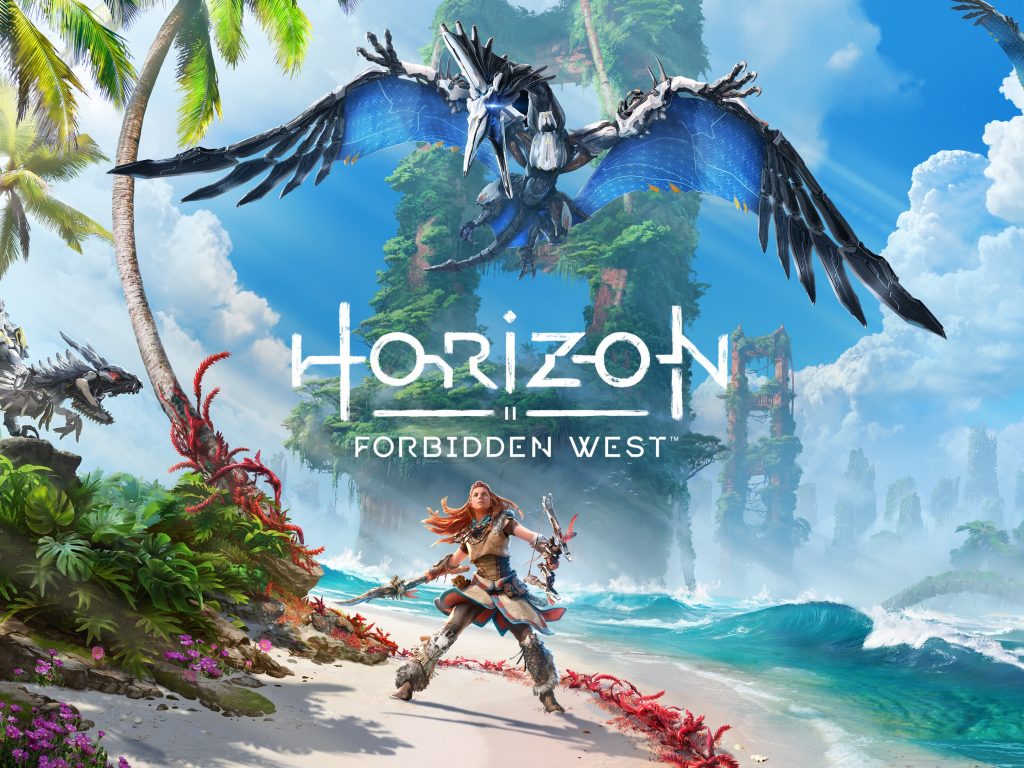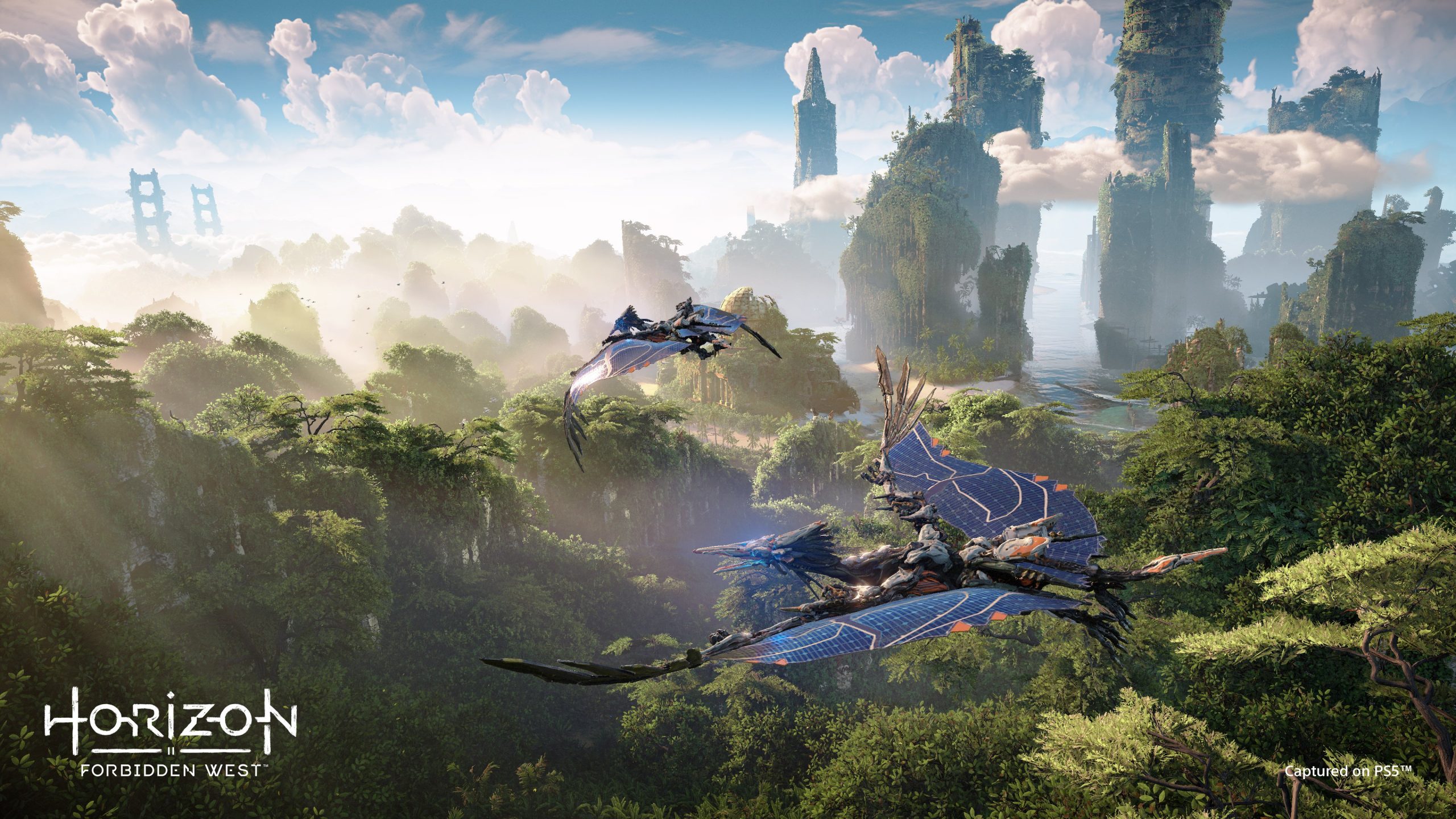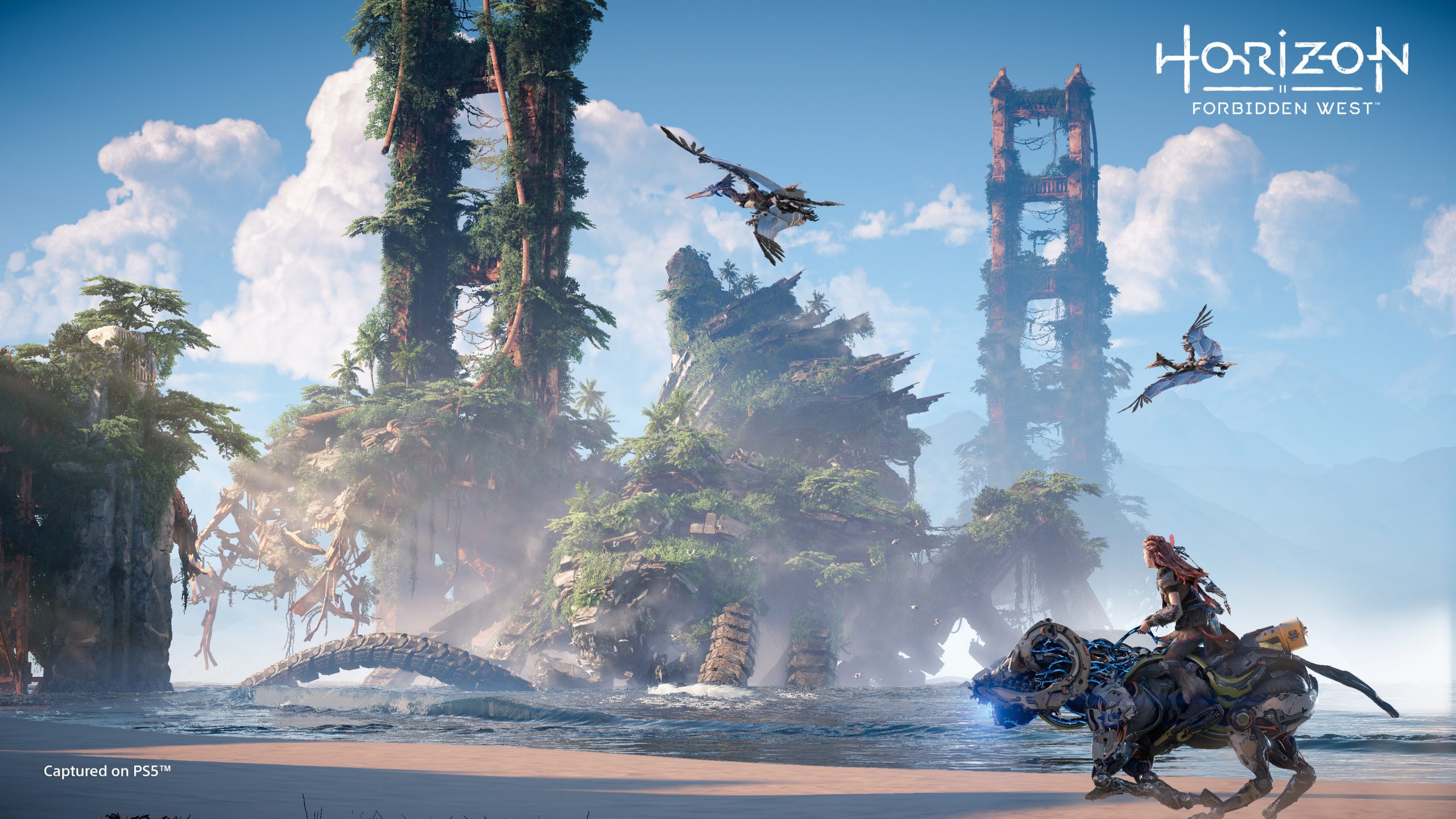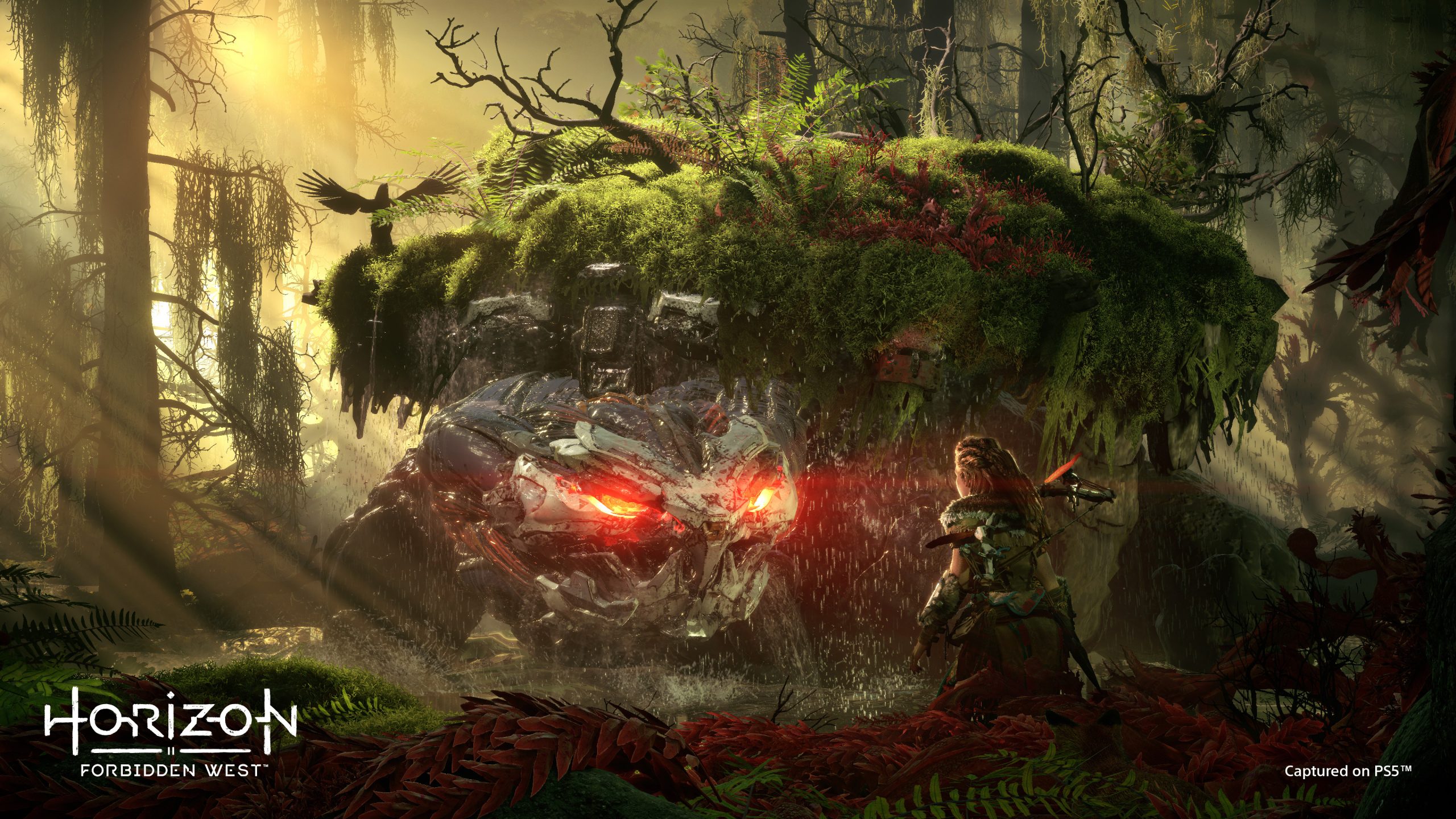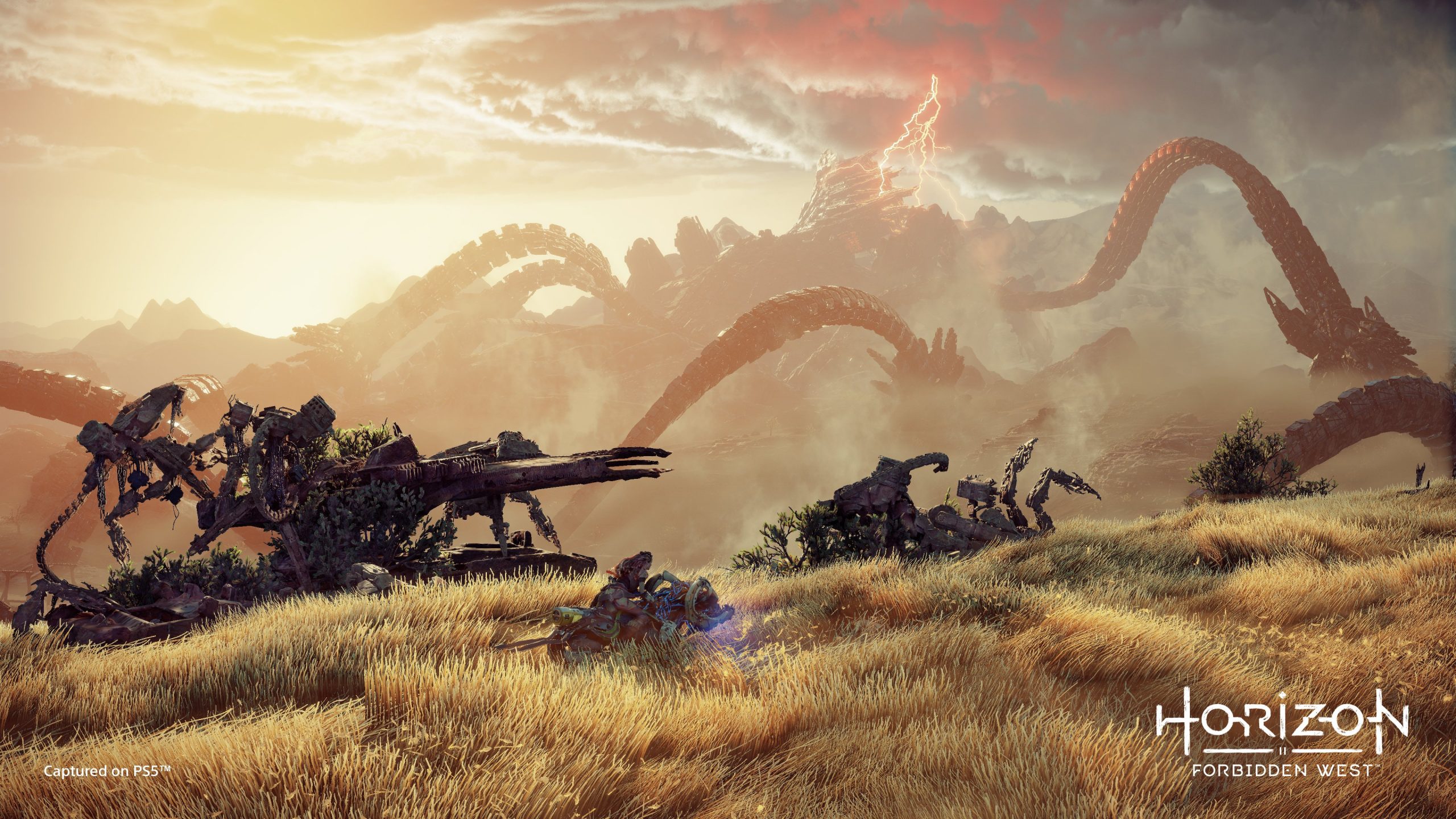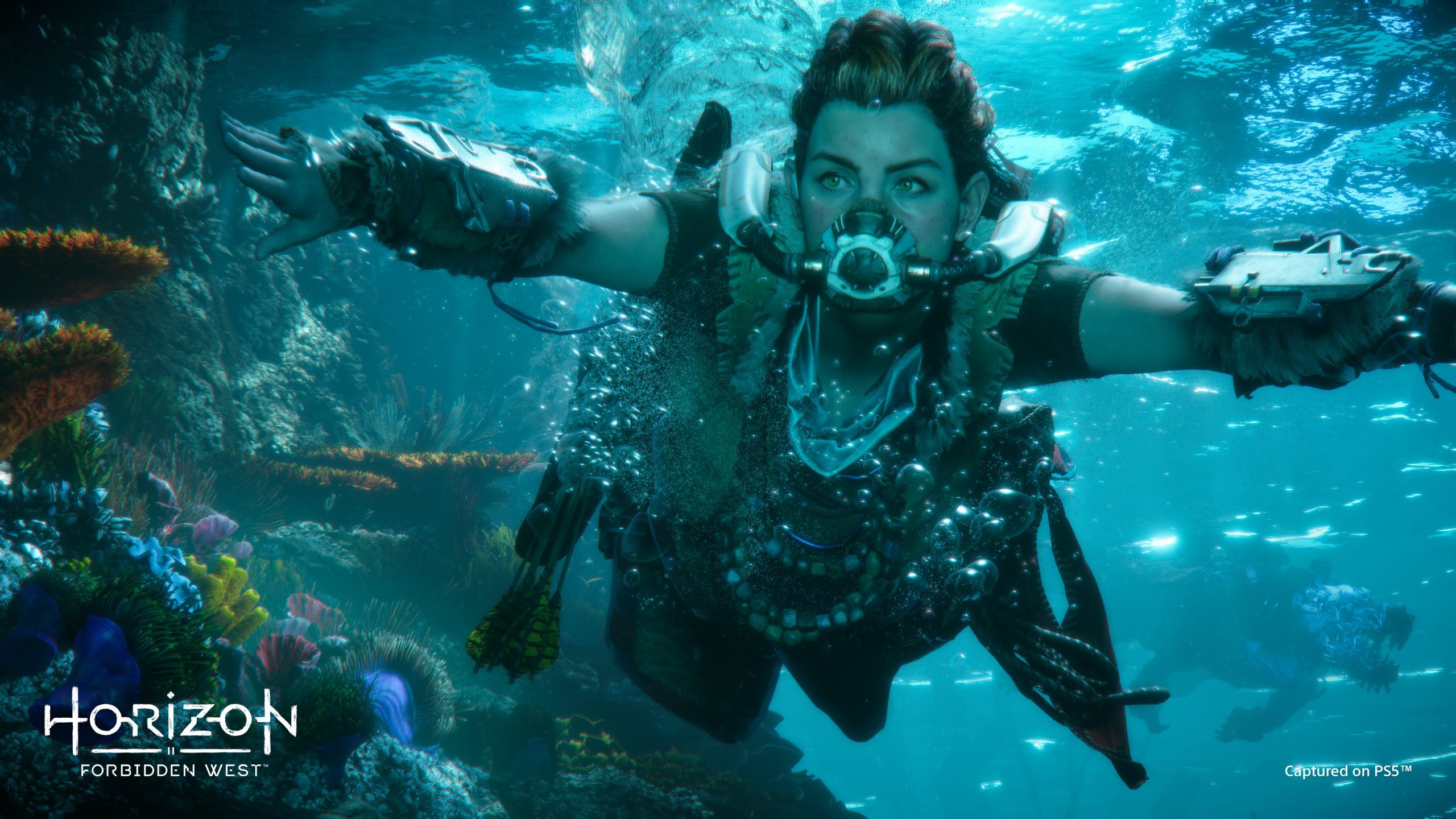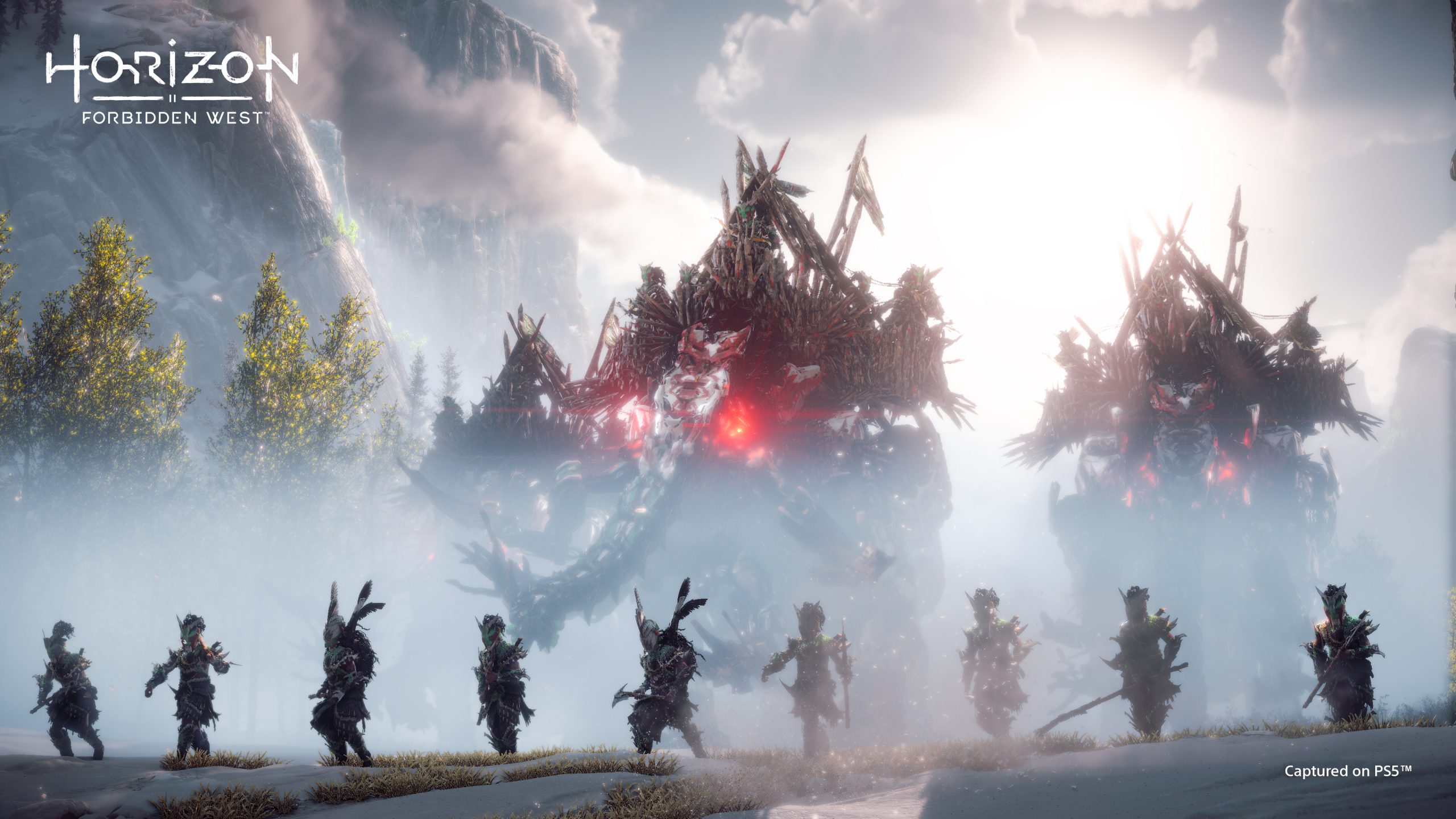Big studios deciding to invest in a brand new IP is often a cause for celebration, as was the case in 2017 when Sony’s Guerilla Games released Horizon: Zero Dawn. The pragmatic, red-haired archer Aloy became a new mascot for PlayStation, and her exploits fighting robotic dinosaurs and solving a post-post-apocalyptic mystery garnered widespread critical acclaim. And then The Legend of Zelda: Breath of the Wild came out, and Zero Dawn’s spotlight was shattered as an entire genre was redefined.
Levity aside, Horizon: Forbidden West is a sequel with far more resting on its shoulders than normal, not only does it have to live up to and attempt to surpass its well-received predecessor, it also has to release in an industry where ‘open-world’ no longer means what it did at the start of 2017. So, does Forbidden West rise to the challenge?
Several months after the culminating events of Zero Dawn, Aloy is searching far and wide for a backup of the world-mending A.I., Gaia, which is the only thing that can stop a second apocalypse. One rather lengthy, linear prologue later, Aloy sets out for the Forbidden West after receiving a new lead about the potential location of a Gaia backup and the game gets underway proper.
The graphics are naturally the first thing you’ll notice and they are absolutely stunning. The sheer fidelity and level of detail verge on overwhelming at times, where I almost felt like my eyes were unable to adequately take in everything at once. I played on ‘favour resolution’ mode, which is capped at 30fps but to my mind, this is one of those rare cases where the benefits are more than worth the sacrifice. Character models and the cinematic lighting in cutscenes are a real standout, with even regular dialogue sequences (ala Mass Effect or The Witcher) looking like something out of an animated feature film.
The finer details are impressive too, like sunlight shining through the sand that flicks up as Aloy runs through it or the nuances of an actor’s facial expressions being perfectly realised in the motion capture. The environments are a lot more diverse than in Zero Dawn, and there’s a healthy splash of colour and verticality across the board. The day/night cycle allows for some jaw-dropping sunsets and sunrises and other weather effects like rain, fog, intimidating red-tinted cyclones, and dust devils all add so much to the sense that this is a real, and dangerous, world.
Speaking of believability, one of my biggest criticisms of Zero Dawn was how… pantomime… the towns and the main city of Meridian felt. Two years after Novigrad in The Witcher III, Meridian felt completely underwhelming, especially given how much the narrative built it up as the current pinnacle of civilisation. Forbidden West still suffers from these issues but to a far lesser extent. Towns are laid out and populated like actual places, featuring taverns and marketplaces and even some examples of industry.
One of the first towns you come across has a whole log cutting operation going where the river is used to transport felled trees from upstream, and then this system of hooks and saws pulls the logs out of the water and cuts them up. It’s all set dressing of course but it goes such a long way to make the world feel like a dynamic place where people actually live.
Combat is largely similar to the first game, Aloy has a spear for close quarters as well as various kinds of bows, slings, and traps at her disposal. There are a few new weapons and arrow types to complement the (many) new machine types, but these added layers don’t really translate into a deeper or more rewarding experience. At times it can feel like a bit of a drag to have to cater your weapon loadout to this specific enemy type when you may not need to use *checks notes* purgewater arrows again for some time. Thankfully in most cases shooting a thing in its weak spots enough times will cause it to go down, and that remains fun.
There are some welcome changes and additions to the combat, however, with none being more prevalent than with the melee combat. Perhaps taking a leaf out of 2018’s God of War, Aloy now has unlockable combos, charge attacks, and valour abilities that have their own resource meter that builds up over time. A new series of side activities center around melee combat and involves challenges teaching you how and when to use these abilities and combos.
Rounding out Aloy’s equipment is the Pullcaster (essentially a grappling hook) and the Shieldwing (a glider). Both of these are really fun to play around with as they make Aloy far more maneuverable in combat and make traversing the environment feel less ‘sticky’.
There’s a handful of new gameplay mechanics as well as reworked old ones. Aloy can now descend underwater for the first time which may sound like a cool idea but in practice leaves a lot to be desired. Movement feels sluggish, it’s kinda hard to see anything and its addition isn’t really justified. When using Aloy’s focus to scan the environment it will now highlight climbing pathways. It’s still a long way from the likes of Breath of the Wild, but it’s a somewhat clever way of giving the illusion of freedom without having to completely redesign the game.
The climbing and traversal are not without their frustrations. I would often find Aloy getting stuck when she appeared to have a clear path, including at the top of a ladder. I would have to climb down and back up multiple times before she’d actually crest the platform at the top of the ladder. Other times I found myself plummeting to my death because Aloy didn’t properly ‘latch’ onto a beam or tightrope. As the game uses an autosave checkpoint system, I often lost several minutes of progress due to dying in this way.
The main narrative hooks take a good long while to fully emerge but once they do (and the new mystery truly rises its head) I was pretty invested. Learning about Project Zero Dawn and the events that led to there being robot animals everywhere was the biggest driving force of the original game’s narrative and I was pleased to discover that Forbidden West presents a new set of questions that manage to recapture that same sense of intrigue.
Aloy however is a little shallow this time around. In Zero Dawn she has the whole outcast thing going on and we sort of learn about the world alongside her. At the start of Forbidden West, she’s a famous saviour of all humankind, knows everything while the various tribes know nothing, and is on a timer to save the world again. Because of this, she frequently comes across as frustrated with everyone and everything that stands in her way, which just translates to me being frustrated with everyone and everything that stands in her way.
This is not the first epic open-world game to struggle with this conundrum, specifically that there is a ticking time bomb that will end the world but hey do you wanna play a board game or go find this dude’s favourite pair of boots? At least Geralt actually seems to enjoy himself while being distracted. Aloy is completely uninterested in the people around her, knows everything anyone needs to know at any one time and doesn’t ever stop to smell the roses.
Guerilla has this tension here where Aloy is more like the player in that she knows the truth about the apocalypse and technology and human history and then there are the various tribes who worship the sun or see flickering holograms as divine ‘visions’, but they never do anything remotely interesting with it. It’s two different hemispheres that may be interesting when observed on their own, but so rarely interact in a meaningful, exciting way.
This disconnect with Aloy is particularly noticeable because Guerilla has made a clear push to have Aloy’s friends play a more direct role in the story. Varl, Erend, and a handful of new characters spend a lot more time at Aloy’s side, which does give her someone to bounce off (rather than constantly talking to herself) but doesn’t always lead to particularly exciting missions or conversations. In fact, if you haven’t played Zero Dawn since 2017 and you can recall who Varl and Erend are… hats off to ya.
Another issue is that Forbidden West feels overwrought when you get down into the finer details of upgrading weapons and armour, or unlocking skills. Upgrading your gear is quite expensive and requires rare machine parts that you need to specifically target to acquire (can’t just loot them once they’re dead) and yet you also find overall better quality gear to replace your initial loadout relatively often.
The skills are the same, there are a lot of “do more damage with x”, “take less damage when y”. The UI is pretty, the feedback of unlocking skills or upgrading gear is satisfying, and seeing the different visual styles of armour is fun, but taken as a whole these systems feel like open-world game design boxes to be ticked, rather than something actually worthwhile engaging in.
The music is a notable improvement over Zero Dawn, it has more of an identity and isn’t afraid to get a little weird here and there. I was reminded a number of times of the score of Mass Effect, with the use of synths and general ethereal vibes. I’m not certain, but I think the music is dynamic depending on how you’re progressing through a mission. For example, the music might be calm when at the base of a tower, but as you start climbing up and the danger increases, the music picks up in both tempo and complexity, really cool stuff.
Horizon: Forbidden West takes on the daunting task of following up a successful debut with great enthusiasm. It stays true to everything that made the original interesting and fun, and while not all of its gameplay additions feel necessary, the impact of the ones that do work far outweigh the frustrations of those that don’t. The graphics are worth the price of admission alone and exploring this vibrant, living world is an absolute blast.
Aloy could certainly lighten up a bit and the character progression system leaves something to be desired, but when all is said and done, Horizon: Forbidden West raises the bar for super high budget, eye-watering visual fidelity, blockbuster open-world action RPGs. And then Elden Ring came out…
Rating: 8/10
Horizon: Forbidden West was reviewed on PS5 using a review code provided by the publisher.

